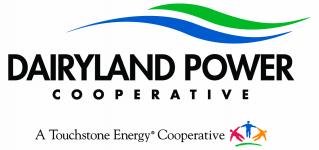Electronic recycling, often referred to as e-recycling, involves the responsible disposal and recycling of electronic devices at the end of their useful life. It aims to recover valuable materials such as metals (i.e., gold, silver and copper), plastics and glass from old electronics, which can then be reused in new products.
Improper disposal of electronics not only harms the environment but also jeopardizes public health by contaminating soil and water sources. As one of the fastest growing forms of waste worldwide, the Wisconsin Department of Natural Resources reports that the world produces about 53 million metric tons of e-waste, equivalent to throwing 1.7 million laptops away each year.
As part of our sustainability efforts at Dairyland, an e-recycling program has long been a part of our environmental practices. What was once an annual one-day event has now evolved to a continual process available all year with a designated e-recycling station at the La Crosse Service Center. Environmental Specialist Andy Thomes oversees the e-recycling program and notes that, since 2021, Dairyland has recycled over 55 tons worth of e-waste which is equivalent to six full semi-truck loads. The e-waste is then taken to Dynamic Lifestyle Innovations located in Brice Prairie, Wis.
The impact of Dairyland’s e-recycling initiatives extends beyond environmental benefits. By reducing e-waste in landfills, Dairyland contributes to the conservation of natural resources and minimizes the carbon footprint associated with electronics manufacturing. For instance, the Wisconsin Department of Natural Resources reported that recycling one million laptops saves the energy equivalent to the electricity used by 6,657 homes in the U.S., reduces greenhouse gas emissions equivalent to removing 2,209 cars from the road and conserves more than 1,300 tons of raw material a year.
